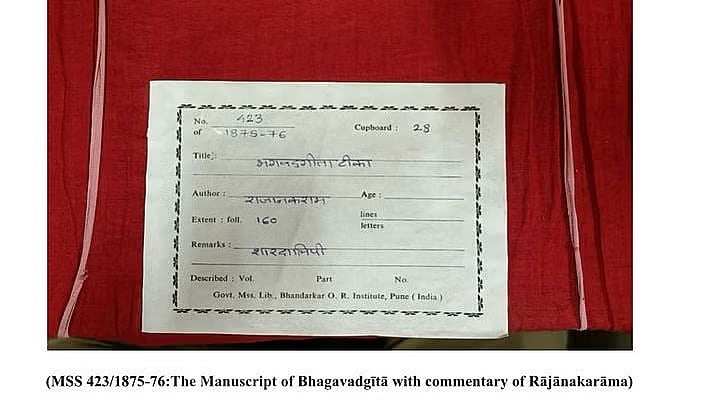
Prime Minister Narendra Modi, in a post on X, on Friday described the inscriptions as 'a proud moment for every Indian across the world'.
Credit: X/@gssjodhpur
UNESCO’s decision to add manuscripts of the Bhagavad Gita and Bharat Muni’s Natyashastra to its Memory of the World Register underlines the value of the texts and their place in the world’s heritage.
The two are among the 74 new documentary heritage collections added this year. UNESCO launched the Memory of the World (MoW) Programme in 1992 with the aim of “guarding against the collective amnesia, calling upon the preservation of the valuable archive holdings and library collections all over the world, and ensuring their wide dissemination”. The register is a compendium of documents – manuscripts, oral traditions, audio-visual materials, and library and archive holdings which are of “world significance and outstanding universal value”.
It now has 570 entries from different parts of the world, which include historical, religious and artistic items as diverse as Sri Lanka’s Mahavamsha chronicles, Auschwitz trial recordings and Cuban film posters.
Earlier entries from India included the Rig Veda, works of philosopher Abhinavagupta and the archives of the Dutch East India Company. Both the entries this year are manuscripts preserved by the Bhandarkar Oriental Research Institute, Pune.
Both the Gita and the Natyashastra mark the high intellectual and cultural points achieved by India centuries ago. It is not just as religious or literary texts that they have been added to the MoW programme.
UNESCO’s decision affirms their universal value and aims to make them better known and to facilitate greater access to them for research and education. It has also taken care to preserve the world’s documentary heritage, particularly in areas affected by conflict and natural disasters.
It considers documentary heritage as important for sustained development and links all 17 Sustainable Development Goals (SDGs) to the cultural traditions and achievements of societies. UNESCO rightly concludes that an affirmation and acknowledgement of these traditions will hold societies together and underline the importance of humanity.
Prime Minister Narendra Modi has described the inclusion of India’s inscriptions as a “proud moment for every Indian across the world.” These are India’s contributions to the world’s heritage. He also said it is a global recognition of India’s timeless wisdom and rich culture. The UNESCO project sends out the message that the wisdom and culture of the world is the result of individual contributions of all countries. These contributions are from different parts of the world and from across fields. The documents record the progress of the world through centuries and together, represent the whole range of human activities which will be preserved as its collective memory. They link the past to the present and take it forward to the future.
